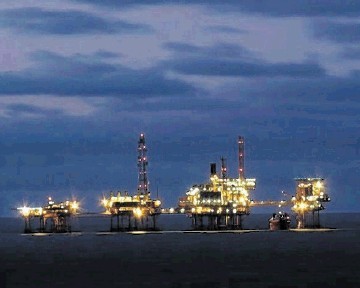
Perenco has filed decommissioning programmes for two platforms serving the Leman field, but hints at a potential re-use opportunity for one installation.
A revised decommissioning programme (DP) was filed with regulator Offshore Petroleum Regulator for Environment and Decommissioning (OPRED) last month, and covers the removal of topsides at Leman 49/27H (27H) and Leman 49/27J (27J) in the southern North Sea.
The Leman field lies around 30 miles from the Bacton Gas Terminal (BGT) off the coast of East Anglia, where gas production is brought ashore. The field hosts a total of 16 development platforms, nine of which are operated by Perenco.
27H and 27J were installed in 1984 to provide gas extraction facilities, and to export gas to the main Leman 49/27A (27A) platform. They are operated by Perenco (78.26%) in partnership with minority partner Rockrose Energy (21.74%).
Last year the company completed its Southern Hub Asset Rationalisation Project (SHARP) project – a move to combine the Leman and Inde fields into one fit-for-purpose production hub, and extend the operating life of Leman and the Indefatigable field.
As a result, the nearby 27A platform will become a normally unattended installation (NUI) this year. Produced gas and condensate received at 27A from the linked satellite platforms (including 27H and 27J) will instead be routed to the Leman 49/27B (27B) platform and on to Bacton via pipeline PL23.
The DP covers the removal of the two topsides, each of which weighs just over 900 tonnes, and comprises a single platform on a four-legged tubular steel jacket piled into the seabed.
Perenco expects to use a decommissioning jack-up barge or a drilling rig to plug and abandon (P&A) the platform wells and make the platforms hydrocarbon-free.
It then plans to remove the topsides using the barge, skidding the structures onto the deck using hydraulic jacks – though other removal options, including the use of a heavy-lift vessel and dismantling in smaller pieces, are also being considered.
A final decision will be made following further engineering studies and separate programmes will be filed for related jackets and pipelines.
However, Perenco says it is also “currently reviewing the potential re-use of the 27H installation.”
If this re-use proceeds, it expects the 27H topsides will be rendered hydrocarbon free and the wells will be plugged to “AB3 status”.
Questioned as to its re-use plans, a Perenco spokesperson said “a number of options are being reviewed internally,” though did not provide further details.
In the case of re-use, Perenco said it expects to remain liable for the decommissioning of the installation at a later date.
Altogether the French-headquartered energy group owns and operates the largest infrastructure in the UK North Sea, comprising 45 offshore platforms, 14 subsea wells, and a network of more than 2,400 km of pipelines connected to its two onshore terminals at Bacton and Dimlington where gas is received, treated, and then exported into the National Grid.
It also oversees more than 10% of the entire North Sea well stock, and operates more than 200 permanently producing wells across 40 gas fields, including at Leman, Trent, Cleeton, West Sole and others.
Recommended for you
